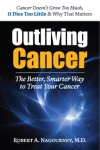Chemosensitivity Testing Captures Attention of “Nature Biotechnology”
February 19, 2013 Leave a comment
 An interesting editorial appeared in the February 2013 issue of Nature Biotechnology titled “Dishing out cancer treatment.” The lead line reads, “Despite their limitations, in-vitro assays are a simple means for assessing the drug sensitivity of a patient’s cancer . . . we think assays deserve a second look.”
An interesting editorial appeared in the February 2013 issue of Nature Biotechnology titled “Dishing out cancer treatment.” The lead line reads, “Despite their limitations, in-vitro assays are a simple means for assessing the drug sensitivity of a patient’s cancer . . . we think assays deserve a second look.”
The author describes the unequivocal appeal of laboratory analyses that are capable of selecting drugs and combinations for individual patients. At a time when 100’s of new drugs are in development, drug discovery platforms that can mimic human tumor response in the laboratory are becoming increasingly attractive to patients and the pharmaceutical industry. While the author, rooted in contemporary molecular biology, examines the field through the lens of genomic, transcriptomic, proteomic and metabolomic profiling, he recognizes that these analyte-based approaches cannot capture the tumor in its microenvironment, yet we now recognize that these micro-environmental influences are critical to accurate response prediction.
As one reads this piece, it is instructive to remember that no other platform can examine the dynamic interaction between cells and their microenvironment. No other platform can examine drug synergy. And no other platform can examine drug sequence.
It is these complexities however, that will guide the next generation of drug tests and ultimately the process of drug discovery. Even the most ardent adherents to genomic profiling must ultimately recognize that genotype does not equal phenotype. Yet, it is the tumor phenotype that we must study.
I am gratified that the editors of so august a journal as Nature Biotechnology have taken the time to reexamine this important field. Perhaps, if our most scientific colleagues are beginning to recognize the importance of functional analyses, it may be only a matter of time before the clinical oncology community follows suit.
The editor’s final line is poignant, “After years spent on the sidelines, perhaps in-vitro screening methods deserve another look.” We couldn’t agree more.




